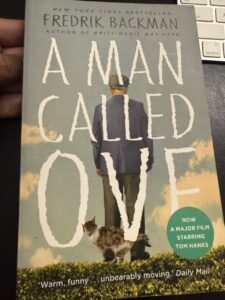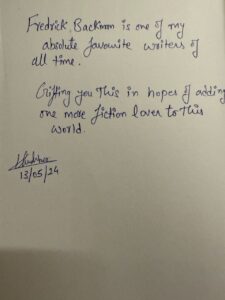A few months ago, I wrote about my decision to start reading fiction, inspired by a conversation between Tim Ferriss and Claire Hughes Johnson. The idea of reading fiction to build empathy was an out-of-the-box idea (at least for me). However, what makes this experience even more unique is that I read this book in a physical format—something that has always been a challenge for me. The promise made in this post https://sp2hari.com/fiction/ is finally done.
For the longest time, I have preferred audio books. Listening to physical books while walking is my only way of consuming them. I lacked the patience to sit at a place and read a book. Phone and laptops were a few steps away and kept me away from physical books.


1. Book vs. Movie: The Backstory Makes the Difference
One of the biggest surprises about reading A Man Called Ove after watching the movie was how much more depth the book provided. The movie does an excellent job capturing Ove’s grumpy yet loveable personality, but the book gives a much richer context to his life experiences.
For instance, the book shares more details about Ove’s early life—his years working as a railway cleaner and later as a construction worker building houses. These moments provide valuable insights into how he became the person we see in both the book and the movie. His relationship with his father, his strong moral code, and his belief in hard work are all developed in a way that the movie simply doesn’t have time to explore. This additional context makes his stubbornness and his sense of right and wrong feel much more grounded.
2. The Emotional Impact of the Ending
One of the important moments in A Man Called Ove is the final scene. I went back and watched the movie’s ending again (you can find it here: YouTube Link), and I noticed an interesting difference. The letter Ove leaves behind in the movie feels longer and more dramatic, whereas in the book, it’s much more concise.
This is a classic example of how books and movies handle emotional moments differently. The movie draws out the emotions, making the farewell feel grand and cinematic, while the book delivers it in a more subtle and understated manner. Personally, I found the book’s version more effective—it felt more in line with Ove’s character, a man of few words who expresses love and care in actions rather than long, sentimental letters.
Overall, glad that I read the book. I enjoyed the movie, but learnt a LOT from the book. Something that I’ll recommend to everyone (even if they’ve watched the movie).
